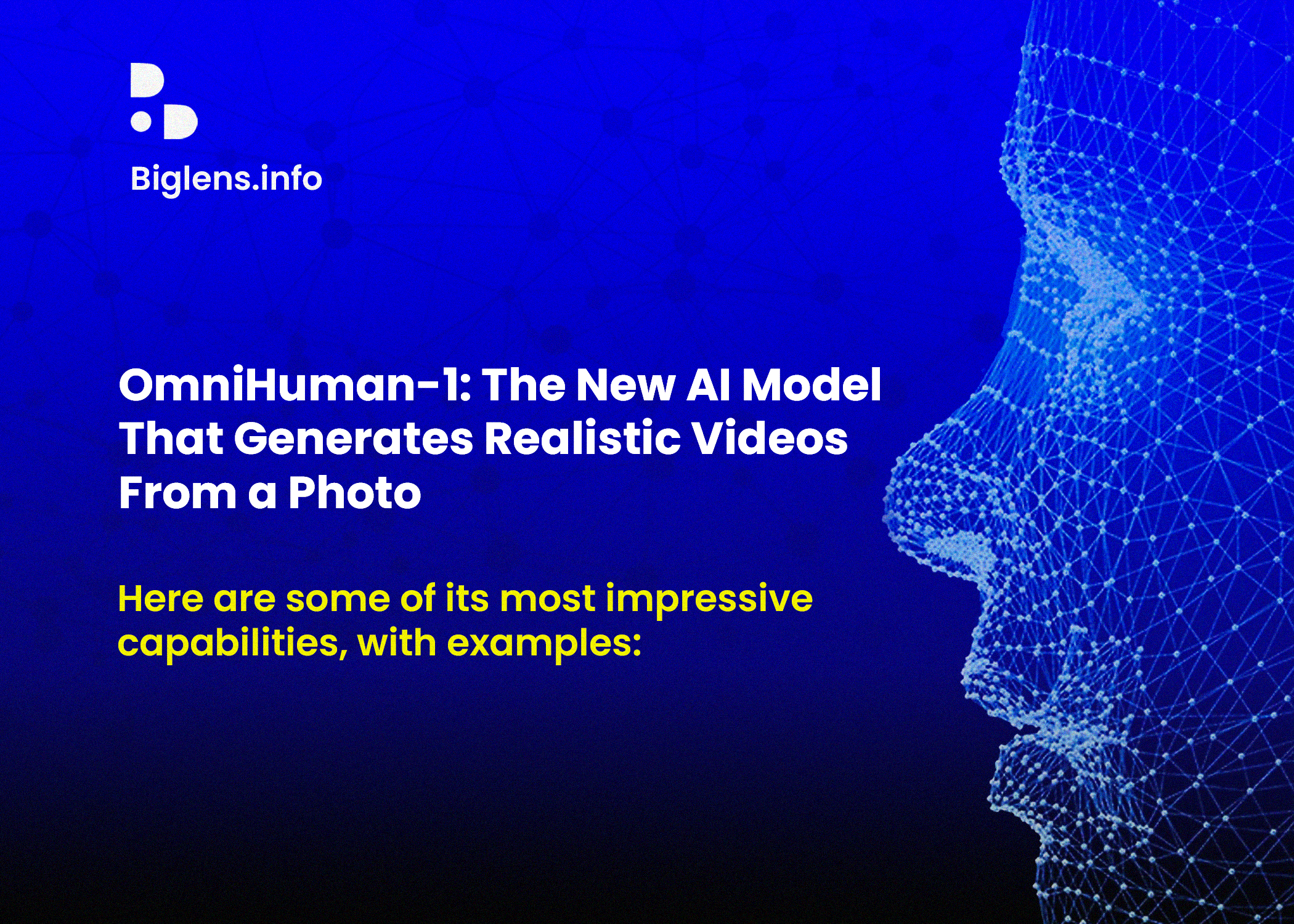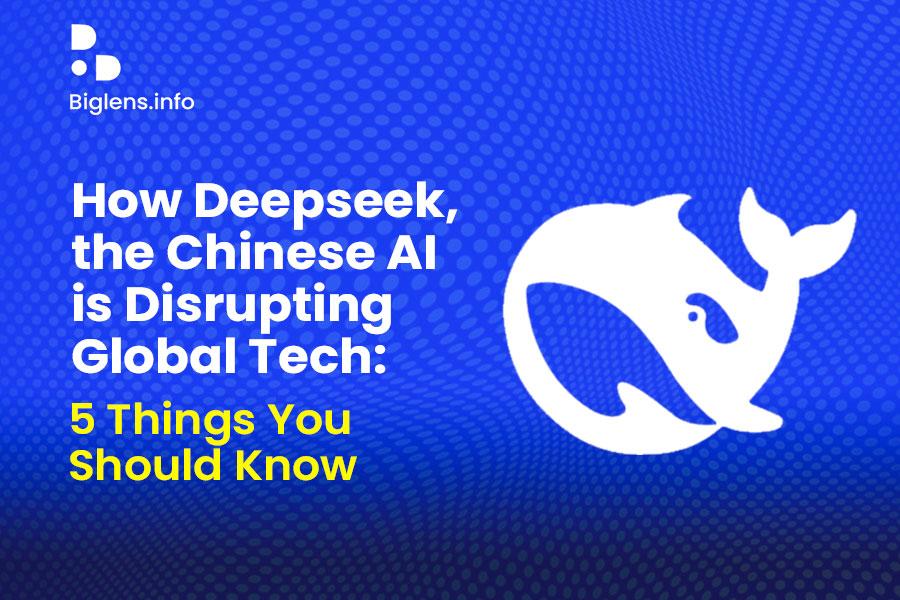OmniHuman-1: The New AI Model That Generates Realistic Video From a Photo
China’s AI evolution is surging once again! Months ago, we were still in a competition where DeepSeekAI and Qwen models were built to rival top-tier models like GPT-4o, Claude 3.5 Sonnet and DeepSeek V3. Now, it seems we’re in the midst of a Chinese digital revolution. Today, a new wave of debate has seized global attention with the innovative AI-generated video tool known as OmniHuman. With ByteDance’s OmniHuman-1 redefining AI video generation and DeepSeek’s breakthroughs in cost-efficient models, are you curious to know some interesting facts about OmniHuman and discover how the Chinese are setting new global standards in artificial intelligence? Follow me as we unravel this game-changing AI model. ByteDance, the parent company of TikTok, is the originator of OmniHuman-1, a groundbreaking AI tool that generates lifelike human videos from minimal input. This technological innovation puts China on the global map and positions the country as a leading contender in the global AI race. In this piece, I will explore its benefits, challenges and limitations. I will also share samples generated with OmniHuman-1 and simple steps to navigate it for free. Table of contents OmniHuman: The New AI Model That Generates Realistic Video From a Photo What is OmniHuman-1? Limitations of Existing Models OmniHuman-1 Limitations & Drawbacks Future Developments & Applications Pros and Cons How to Use OmniHuman-1 FAQs What is OmniHuman-1? OmniHuman-1 excels at creating realistic human videos that stand, gesture, and express emotions in sync with speech or music. What’s even more impressive is that it simplifies the entire process, eliminating complex setups and limitations of existing methods. Whether a user wants to create a portrait, half-body shot, or full-body image, OmniHuman-1 handles it all with lifelike human motion, natural gestures, and stunning attention to detail. At its core, OmniHuman-1 is a multimodality-conditioned AI-driven human animation which integrates different types of inputs, including images and audio clips, to generate highly realistic human videos, making a digital human stand up, gesture with arms and hands, and express emotions in sync with speech or music. It is also interesting that OmniHuman-1 can work with a single image. No more worrying about complex setups or the limitations of existing models—OmniHuman simplifies it all and does it better than anything you think you’ve seen so far. Read Also: How DeepSeek, the Chinese AI, is Disrupting Global Tech: 5 Things You Should Know Limitations of Existing Models Research has shown that current AI-driven human animation models often depend on small datasets and are tailored to specific scenarios, leading to subpar quality in the ai generated lifelike videos. Many existing methods struggle to generalize across diverse contexts, resulting in animations that lack realism and fluidity. These omnihuman models often fail to accurately capture body movement, facial expressions, and human-object interactions, making it difficult to create realistic animation. Moreover, the reliance on single input modalities—where the AI model only receives information from one source rather than combining multiple sources like text and images—limits their capacity to capture the complexities of human motion. As the demand for high-quality AI generated content grows, there is an increasing need for frameworks that integrate multiple data sources to enhance the quality of realistic human videos. The OmniHuman-1 Solution Source: OmniHuman-1 Research Paper Multi-Conditioning Signals OmniHuman-1 effectively integrates multiple inputs, including text, audio, and pose data, ensuring highly realistic motion. This comprehensive approach allows the model to produce realistic and contextually rich animations, setting it apart from existing Ai generated media. Omni-Conditions Design OmniHuman-1 employs an omni conditions training strategy that integrates various driving conditions (text, audio, and pose) while preserving the subject’s identity and background details from reference images. This technique enables the AI tool to generate portrait contents that maintain consistency and realism. Unique Training Strategy ByteDance researchers developed a unique training strategy that enhances data science utilization by leveraging stronger conditioned tasks (such as precise pose data) alongside weaker conditions (like audio cues). This method ensures high-quality human video data even from imperfect reference images or audio inputs. OmniHuman-1 Limitations & Drawbacks Despite its impressive features and unlimited capabilities, let me briefly share with you some of the drawbacks and the challenges it raises for new users: OmniHuman-1, like many advanced AI models, is a double-edged sword. Though It offers incredible creative possibilities, but also comes with technical and ethical limitations that must be taken into consideration, so let us compare and contrast it with other AI video generators: OmniHuman-1 vs. Sora vs. Veo 2 OmniHuman-1 joins a competitive field of AI video generators. Two of the most prominent rivals are OpenAI’s Sora and Google’s Veo 2. While all three have different focuses and strengths, OmniHuman-1 excels in creating AI-generated videos with hyper-realistic human motion. Model OmniHuman-1 (ByteDance) Sora (OpenAI) Veo 2 (Google) Best for Animating real people with hyper-realistic human motion. Generating diverse videos from text prompts. High-resolution cinematic-quality video generation. Primary input Single image + audio (optional video/pose data). Text prompt (optionally guided by images/videos). Text prompt (optionally guided by images). Strengths Unmatched realism in human video generation, full-body animation, and perfect lip-sync. Creative scene generation from text, flexible input options. High-resolution output (up to 4K), strong physics, and realism. Weakness Not publicly available yet, high computational requirements. Struggles with detailed human expressions in some cases. Not specialized for talking-head videos, more general-purpose. Source: techopedia.com The Challenge to U.S. AI Dominance According to research, ByteDance, the Chinese company behind TikTok, has unveiled OmniHuman-1, one of the most advanced generative AI models for creating realistic human videos. This development highlights the increasing competition between Chinese and U.S. companies in the field of artificial intelligence. While U.S. companies have largely led in foundational AI models like GPT-4 and DALL-E, Chinese tech firms have been rapidly catching up and, in some cases, breaking new ground. The release of OmniHuman-1 follows other impressive Chinese-developed models like DeepSeek R1, signalling China’s intent to compete at the highest level in AI. ByteDance’s OmniHuman-1 excels in the specific niche of realistic human video generation, potentially surpassing existing methods in accuracy … Read more





